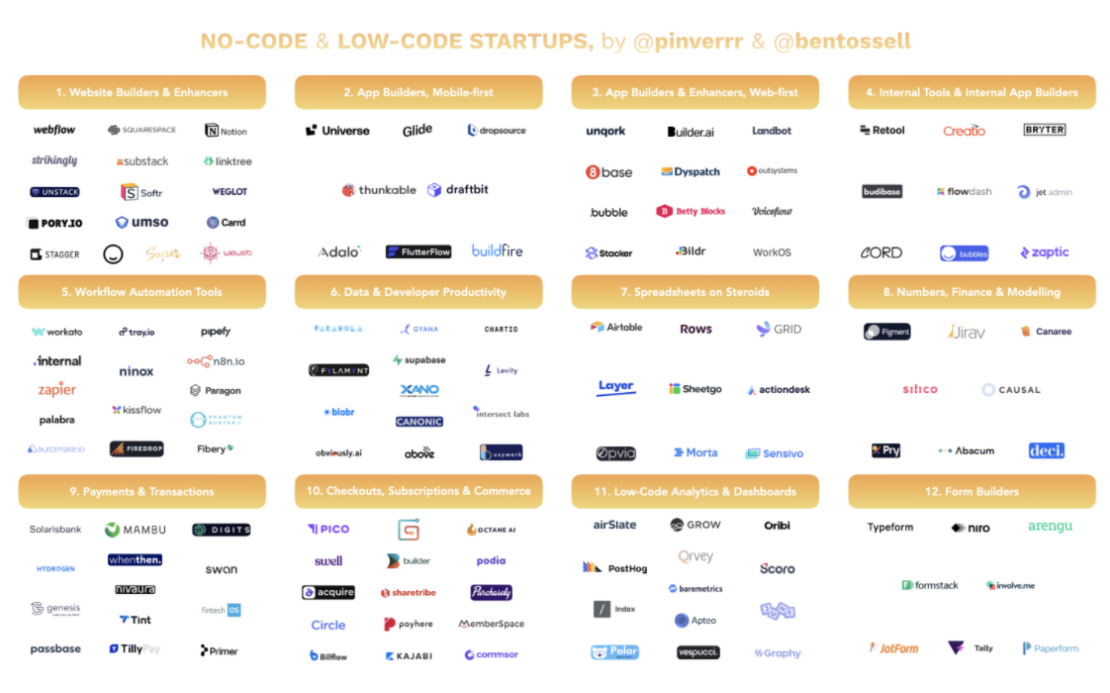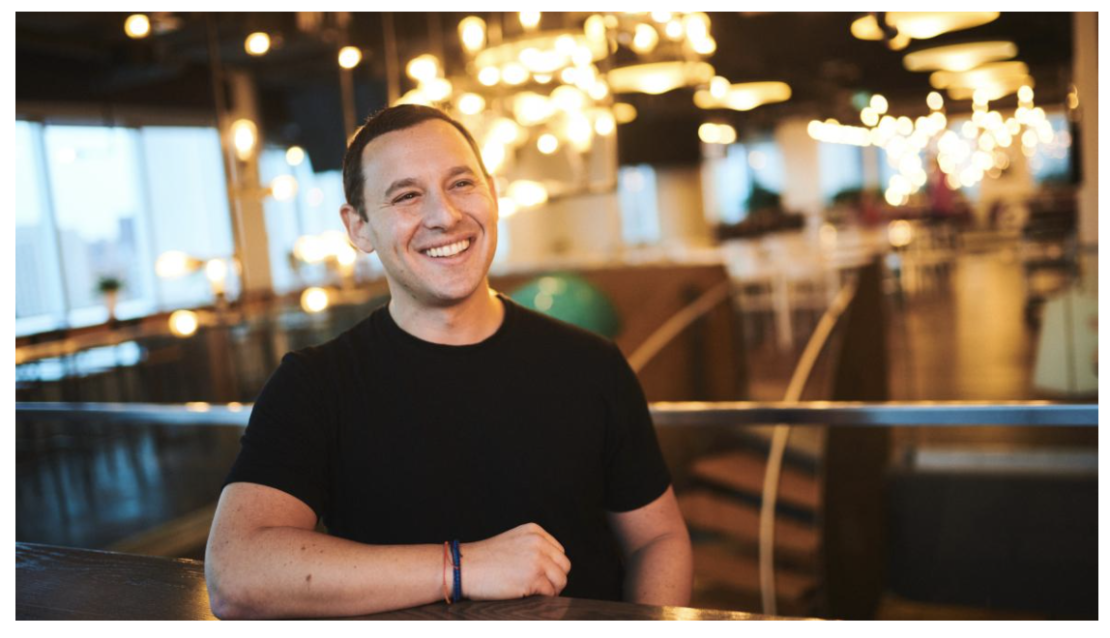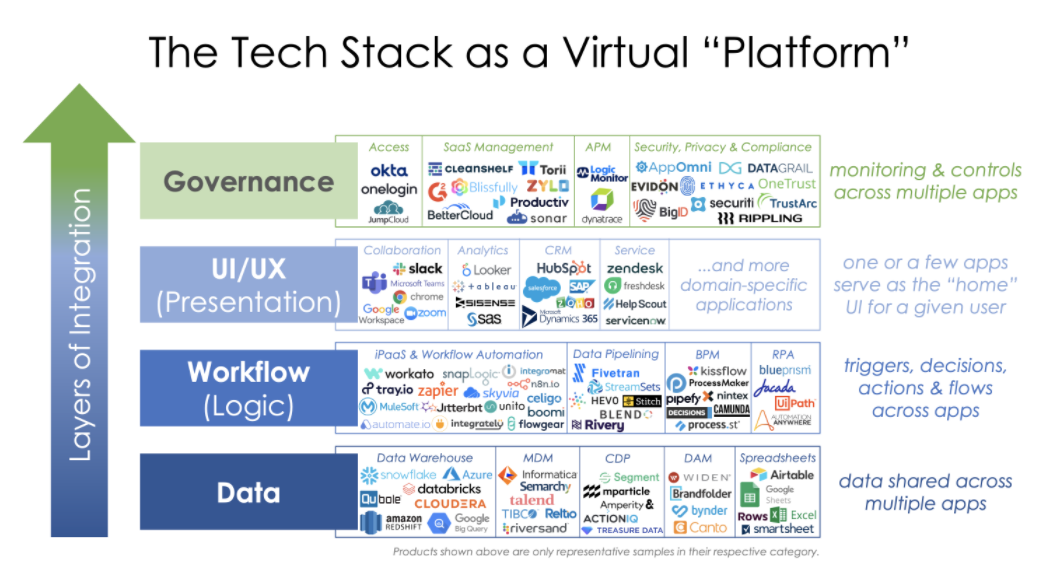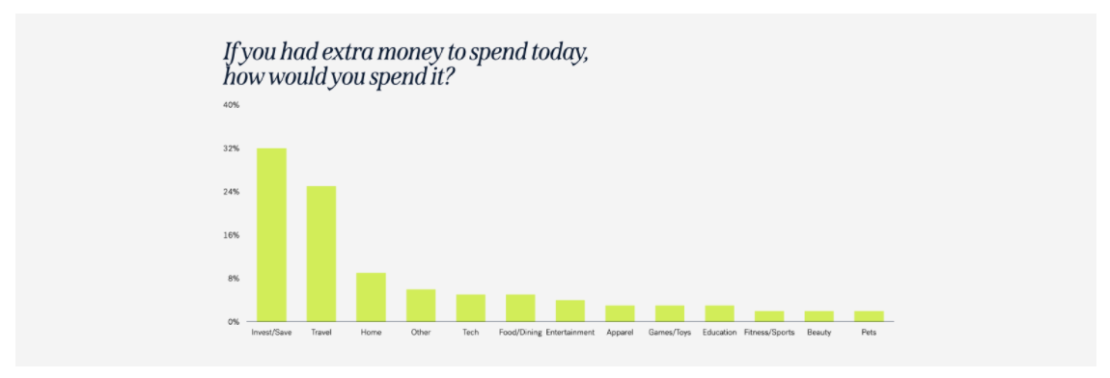
For some time, I’ve been looking for one “source” that curates modern takes on HR Tech, perspectives from the people who build it, and its impact on enterprise — something that’s tailor-made by professionals for decision-makers.
I never found it — so I decided to build it.
Every week, I’ll be sharing fresh insights on tech platforms, design, data, and the future of work — straight to your inbox.
My Thoughts
No-code and low-code solutions now seem to have nearly unlimited access to capital, but there’s still a lot of talk about whether these platforms are all hype. Don’t be fooled — the demand is real. Most custom apps are now being built outside the IT department, by employees with business and non-traditional backgrounds. That said, in a crowded market, not all low-code and no-code companies will survive in the longterm. The question is not whether or not you should consider no-code or low-code platforms for your organization — the question is how to invest in platforms that work for your organization and that will stand the test of time.
On a different note, I’m also proud to announce that Washington Business Journal has named SEI D.C. as #2 on its list of “Best Places to Work” for small businesses. You can see the full list on their website.
Tech Innovation at Work
We’ve seen the proliferation of virtual live events since the pandemic began. But many companies are still learning how to run them well. Here’s a great interview with my friend and fellow Georgetown alum Ryan Costello, co-founder of Event Farm and chief strategy officer of MemberSuite. 📋👨💻✈️ He had some helpful things to say about how to run a successful event:
- Create an environment where conversation and engagement can happen. If the speaker presents without opportunities for audience feedback, you might as well just upload the speaker’s presentation on YouTube and call it an event. An event fundamentally requires human interaction, and that’s why people attend.
- Allow for personalized event experiences. Attendees should be able to choose which parts of the event they want to attend and actively decide how they want to experience the event.
- Branding and creative components are essential. Ensure that the “wow” component of in-person events translates into the virtual space through dynamic videos, logos, branding, and music. 📱🔥
- Take advantage of measurement opportunities. In the online space, you can actively track what attendees are clicking on and where they’re going. Not only do you need to collect this data, but you need to effectively apply it in order to improve the event experience. 📊📈🍾
- Get to know the technology that you’re using and understand its limitations. This allows you to focus on aspects of the event that can actually be executed with the technology you’re using.
As I mentioned, the low-code and no-code space is growing, and the momentum shows no signs of slowing down. But with so many startups, it can be hard to keep track. 📱👩💻💪 If you need help, here’s a good breakdown. The authors break startup companies into categories such as:
- Web builders and enhancers like Squarespace, Substack, and Notion
- Mobile-first app builders & enhancers like Universe, Glide, and Dropsource
- Web-first app builders & enhancers like Unqork, Builder.ai, and Landbot
- Internal tools and internal app builders like Retool, Creatio, and Flowdash
- And many more.

Alteryx Inc., the analytics automation company announced the launch of SparkED — a new education program designed for learners of all skills to gain experience in data analytics. Educators from universities including California State University, Fullerton, University of Richmond and The University of Auckland have already incorporated Alteryx into their curriculum. 🎓📚👨🏫 The goal will be to expand data literacy and close the skills gap — they will offer certificates, software for students and educators, teaching materials, prescriptive learning paths, and a community network for participants.
We need to reach net-zero emissions by 2050 in order to limit global temperature increases to 1.5 degrees Celsius. 🌡️🌎🌲This will take a lot of work across industries. BCG Digital Ventures breaks down the three ways companies can create tangible impact starting now:
- Diversification and uncovering new business models by finding new ways to satisfy their customers’ fundamental needs. This will be a key strategy for many companies seeking to gain access to new markets by reengineering their current offerings in ways that reduce their environmental impact.
- Driving efficiency through low-carbon technologies and solutions. Technologies such as AI and IoT can be deployed to reboot existing operations for a low-carbon future. Supply chain decarbonization, smart sustainability insights and analytics, as well as emissions and waste abatement solutions will also be part of the carbon reduction solution.
- Greenfield innovation — inventing new technologies and advancing breakthrough science, or developing and scaling new implementations of bleeding-edge tech.
The Changing Workplace
Paul Francisco, senior VP and chief diversity officer at State Street Corp., recently talked to The Boston Business Journal about the shifting roles of diversity leaders and advocates. ✊📈 He had some interesting insights: “The dynamic has shifted from just issues of diversity and inclusion to really tackling issues of racism, which is a very uncomfortable subject for many folks. How do we advance this in a way that does bring in allies? It’s always a fine balance. So I find myself busier than ever. And emotionally, I think it’s taking more of a toll on those of us who are diversity practitioners. There’s a lot more demand for our services, there’s a lot more demand of our time, both internally and externally, with employees, with clients, with colleagues from industry peers.”
The US education system isn’t ensuring that students are properly equipped with the skills and capabilities to prepare for a career where they can obtain financial stability. 🤔🎒✏️ On top of the 15 million unemployed or underemployed people in the United States, the outlook isn’t good for new college graduates:
- Of Americans who graduated from a two-year/community or four-year college in the past five years, nearly one in five (19%) reported that their college education experience did not provide them with the skills needed to perform their first post-degree job.
- Additionally, more than half (53%) of these college graduates have not applied to an entry-level job in their field because they felt unqualified
- Nearly half (42%) felt unqualified because they did not have all the skills listed in the job description.
It may be that the four-year degree is no longer aligned with employer needs, and it’s time for hiring managers to consider non-traditional paths. For starters, they can make adjustments to job requirements and descriptions where possible to cater to a variety of educational pathways. Employers should also offer opportunities for training and certificate programs to help upskill employees. Now is the time for employers to increase credibility for skills-based hiring, to remove stigmas around vocational education, and to move forward to create equal opportunities for all students.
Boohoo is planning to link executive bonuses to environmental, social and governance (ESG) targets — 15% of executive directors’ annual bonuses for the year through February 2022 will now depend on whether certain milestones are achieved. 🌲💪🔥 An independent review by U.K. lawyer Alison Levitt had found that Boohoo had prioritized profit and growth and ignored red flags about labor violations. The new plans represent a much-needed shift in practice for a company that had previously tied executive pay to aggressive share price and sales growth targets.
2020 has been a challenging year, but it’s led to greater visibility regarding mental health. Mental health concerns are especially widespread in the entrepreneur community: a staggering 72% of entrepreneurs are directly or indirectly affected by mental health issues, compared to 48% of non-entrepreneurs. 🙆🎤💊 Shopify president Harley Finkelstein recently discussed his own struggles with staying mentally healthy during the pandemic. He writes: “The more I told people I was struggling with my mental health early on in the pandemic, the more support I received. Why is it that we talk about the weather every day and never about mental health? We need to make mental health more like the weather, stripping away the weight of the topic so that it becomes a common subject.” Finkelstein recommends discussing mental health with your teams at work, and creating rituals, hobbies, and rhythms that foster work-life harmony.

All About Data
Here’s a great article from Scott Brinker about how layers of integration for app development can be thought of as layers of aggregation for a company. 📱👨💻These are the layers of integration:

Brinker aligns the layers of tech stack with the Aggregation Theory. According to Aggregation Theory, the dynamics of companies like Google, Airbnb, and Uber are defined by a direct relationship with users, zero marginal costs for serving users, and demand-driven multi-sided networks with decreasing acquisition costs. Here’s how the tech stacks break down:
- Data Layer = Aggregating Data
- Workflow Layer = Aggregating Process
- UI/UX Layer = Aggregating Experience
- Governance Layer = Aggregating Control
With the right tech stack, companies can create direct relationships with users (communications via Slack, single source of truth via Snowflake, etc), zero marginal costs for onboarding multiple users, and demand-driven network effects — acquisition costs go down as the number of users go up. Companies that are using the right mix of technologies are probably already reaping the benefits of aggregation.
The pandemic has brought about some interesting changes in consumer sentiment. Forerunner Ventures surveyed over 1,000 consumers 🛍️💳💭aged 25+, and this was what they found:
- The pandemic-adaptive consumer was more apt to spend more online (64% vs. 46%), try new products (31% vs. 16%), support a creator (25% vs. 15%), shop grocery online for the first time (33% vs. 24%), and use digital health services (15% vs. 5%).
- 35% of people expressed greater interest in working for themselves than before the pandemic, including 45% of 25 to 29-year-olds and 47% of parents with kids under 18 living at home.
- 23% of respondents had purchased directly from an influencer or creator in the past 12 months. This increases to 33% for younger Millennials—a potential marker of upward trajectory for the future.
- Many respondents claimed that if they had extra money today, they’d choose to invest or save it versus spend it in any other category, including those who received three stimulus checks (36% vs. 25% with no stimulus) and those who were very concerned about a new Covid reality (35% vs. 26% not concerned).

Click here to subscribe to Exit Interview, a weekly email about tech platforms, design, data, and the future of work — straight to your inbox.

